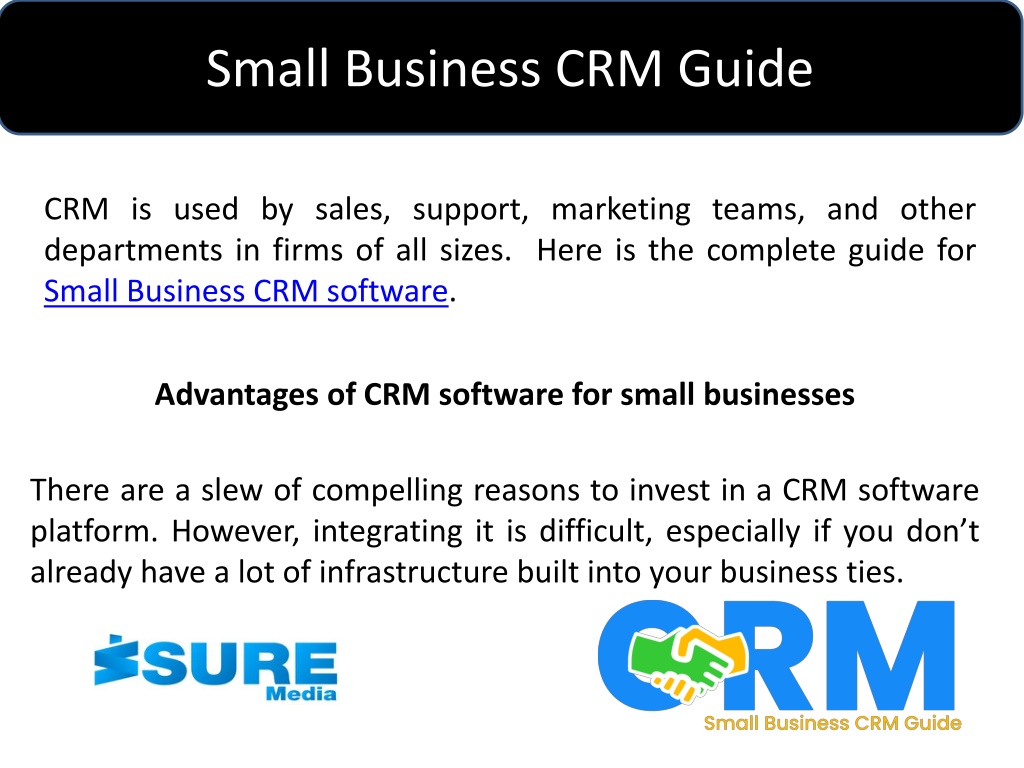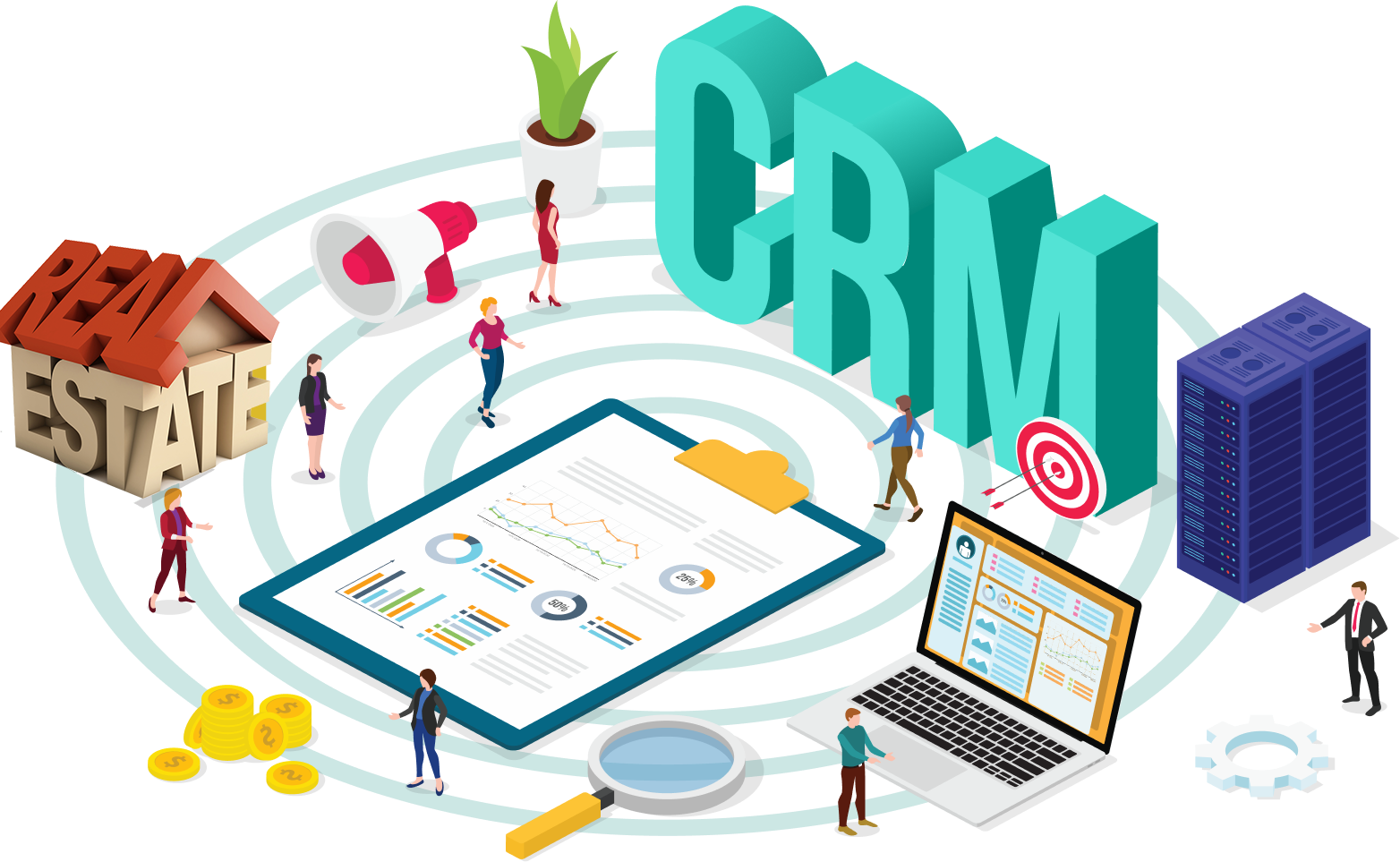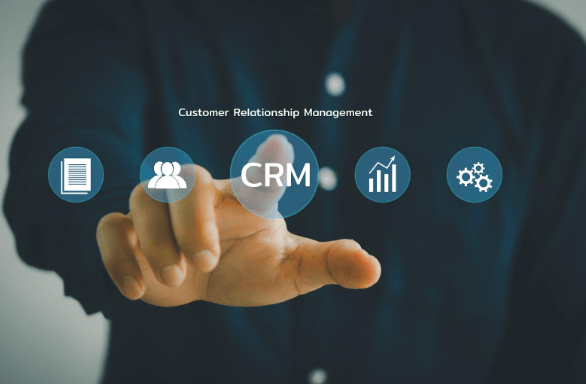Small Business CRM Guide: Your Ultimate Roadmap to Customer Relationship Management Success

Small Business CRM Guide: Your Ultimate Roadmap to Customer Relationship Management Success
Running a small business is a whirlwind of activity. You’re juggling everything from product development and marketing to sales and customer service. Amidst this chaos, building and maintaining strong customer relationships is absolutely crucial. That’s where a Customer Relationship Management (CRM) system comes in. This comprehensive small business CRM guide will walk you through everything you need to know, from understanding the basics to choosing the right software and implementing it successfully.
What is a CRM System? Understanding the Core Concept
At its heart, a CRM system is a technology that helps you manage all your company’s relationships and interactions with current and potential customers. Think of it as a central hub for all your customer data. It’s a place where you can store contact information, track interactions, manage sales pipelines, and analyze customer behavior. Essentially, it’s a tool to help you understand your customers better and serve them more effectively.
Before the advent of sophisticated CRM software, businesses often relied on spreadsheets, sticky notes, and a lot of manual effort to keep track of their customers. This approach was inefficient, prone to errors, and made it difficult to get a holistic view of each customer. CRM systems solve these problems by automating many of the repetitive tasks and providing a centralized, accessible database.
The benefits of using a CRM system extend far beyond just organizing contact information. A well-implemented CRM can:
- Improve Customer Satisfaction: By providing personalized service and quick responses.
- Increase Sales: By helping you identify and nurture leads, and close deals more efficiently.
- Enhance Marketing Efforts: By providing insights into customer preferences and behaviors, allowing for targeted campaigns.
- Boost Productivity: By automating tasks and streamlining workflows.
- Make Data-Driven Decisions: By providing valuable insights into your customer base and sales performance.
Key Features of a CRM System for Small Businesses
While the specific features of a CRM system can vary, certain functionalities are essential for small businesses. These core features will form the foundation of your customer relationship management strategy.
Contact Management
This is the cornerstone of any CRM system. It allows you to store and organize all your customer contact information in one place. This includes names, addresses, phone numbers, email addresses, and any other relevant details. Good contact management also allows you to segment your contacts based on various criteria, such as demographics, purchase history, or engagement level. This segmentation is crucial for targeted marketing and personalized communication.
Lead Management
Lead management is the process of tracking and nurturing potential customers (leads) throughout the sales pipeline. A CRM system helps you capture leads from various sources (website forms, social media, etc.), qualify them, and track their progress through the sales funnel. Features like lead scoring, which assigns values to leads based on their behavior and engagement, can help you prioritize your efforts and focus on the most promising prospects.
Sales Automation
Sales automation streamlines the sales process by automating repetitive tasks such as sending emails, scheduling follow-up calls, and creating sales reports. This frees up your sales team to focus on more strategic activities, such as building relationships with customers and closing deals. Features like automated email sequences and task reminders are particularly valuable for small businesses with limited resources.
Sales Pipeline Management
A sales pipeline visualizes the different stages of your sales process, from initial contact to closing a deal. A CRM system allows you to track deals as they move through the pipeline, identify bottlenecks, and forecast sales. This visibility is essential for optimizing your sales process and ensuring you’re on track to meet your revenue goals.
Marketing Automation
Marketing automation allows you to automate marketing tasks, such as sending email campaigns, managing social media posts, and tracking website activity. This helps you nurture leads, engage with customers, and promote your products or services. Features like email marketing templates, segmentation tools, and analytics dashboards are essential for effective marketing automation.
Reporting and Analytics
CRM systems provide valuable insights into your sales performance, customer behavior, and marketing effectiveness. Reporting and analytics features allow you to track key metrics, identify trends, and make data-driven decisions. This includes reports on sales performance, lead generation, customer acquisition cost, and customer lifetime value. These insights are invaluable for optimizing your business strategies.
Customer Service and Support
Some CRM systems also offer customer service and support features, such as help desk ticketing systems and knowledge bases. These features help you manage customer inquiries, resolve issues, and provide excellent customer service. This can improve customer satisfaction and loyalty.
Choosing the Right CRM for Your Small Business: A Step-by-Step Guide
Selecting the right CRM system can feel overwhelming, but it doesn’t have to be. Here’s a step-by-step guide to help you make the right choice:
1. Define Your Needs and Goals
Before you start looking at CRM systems, take the time to clearly define your business needs and goals. What problems are you trying to solve with a CRM? What specific features do you need? Consider your existing workflows, sales processes, and marketing strategies. Identify the key metrics you want to track and improve. This will help you narrow down your options and choose a system that meets your specific requirements.
2. Assess Your Budget
CRM systems come in a variety of price points, from free to enterprise-level solutions. Determine how much you’re willing to spend on a CRM system, including the initial setup costs, ongoing subscription fees, and any potential costs for training or customization. Consider the long-term value of the CRM and how it can contribute to your revenue growth. Remember that the cheapest option isn’t always the best; a more expensive system with the right features could save you time and money in the long run.
3. Research Different CRM Systems
Once you know your needs and budget, start researching different CRM systems. Look at both well-known and lesser-known options. Read reviews, compare features, and consider the pros and cons of each system. Consider factors like:
- Ease of Use: Is the system intuitive and easy to learn?
- Scalability: Can the system grow with your business?
- Integrations: Does it integrate with your existing tools and software? (e.g., email marketing platforms, accounting software, etc.)
- Mobile Accessibility: Does it offer a mobile app or mobile-friendly interface?
- Customer Support: Is customer support readily available and responsive?
- Security: Does the system offer robust security features to protect your data?
4. Consider the Implementation Process
Think about how you’ll implement the CRM system. Some systems are easier to set up than others. Consider whether you have the in-house expertise to implement the system or if you’ll need to hire a consultant. Factor in the time it will take to migrate your existing data, train your team, and customize the system to your specific needs.
5. Take Advantage of Free Trials and Demos
Most CRM systems offer free trials or demos. Take advantage of these opportunities to test the system and see how it works in practice. This will allow you to get a feel for the user interface, explore the features, and evaluate whether the system is a good fit for your business. Ask questions, explore the features, and make sure the system aligns with your business processes.
6. Choose the Right CRM System
Based on your research, testing, and evaluation, choose the CRM system that best meets your needs and budget. Don’t be afraid to ask for help from the vendor or a consultant. Make sure the system has the features you need, is easy to use, and integrates with your other tools. Make an informed decision and get ready to improve your customer relationships.
Implementing Your CRM System: A Practical Approach
Once you’ve chosen your CRM system, the real work begins: implementation. A successful implementation is essential for realizing the benefits of your CRM. Here’s a practical approach:
1. Data Migration
The first step is to migrate your existing customer data into the CRM system. This can be a time-consuming process, especially if you have a large amount of data stored in spreadsheets or other systems. Ensure your data is clean, accurate, and well-organized before you migrate it. This might involve cleaning up duplicates, correcting errors, and standardizing your data format. Many CRM systems offer data import tools to help streamline this process. Consider using a data migration service if you’re not comfortable doing it yourself.
2. System Configuration
Customize the CRM system to meet your specific needs. This might involve setting up user roles and permissions, creating custom fields, configuring workflows, and integrating the system with your other tools. Take the time to configure the system properly, as this will impact how effectively you can use it. Don’t try to do everything at once. Start with the core features and gradually add more functionality as you become more familiar with the system.
3. Training Your Team
Provide comprehensive training to your team on how to use the CRM system. This should include training on all the essential features, such as contact management, lead management, sales pipeline management, and reporting. Provide ongoing training and support to ensure your team continues to use the system effectively. Develop training materials, such as user guides and videos, to make it easy for your team to learn the system. Encourage questions and provide ongoing support.
4. Establishing Processes and Workflows
Define clear processes and workflows for using the CRM system. This will help your team use the system consistently and efficiently. For example, you might define a specific process for how leads are captured, qualified, and nurtured. Create standard operating procedures (SOPs) that outline each step in the process. This will ensure that everyone on your team is following the same procedures and working towards the same goals.
5. Monitoring and Optimization
Regularly monitor your CRM system’s performance and make adjustments as needed. Track key metrics, such as sales performance, lead generation, and customer satisfaction. Identify areas where the system could be improved and make the necessary changes. This could involve adding new features, modifying workflows, or providing additional training. Regularly review your data and analytics to identify areas for improvement and optimize your CRM strategy.
Best Practices for CRM Success in Small Businesses
Implementing a CRM is a big step, but it’s not a “set it and forget it” scenario. To get the most out of your CRM system, follow these best practices:
1. Get Buy-In from Your Team
Ensure your team understands the value of the CRM system and is committed to using it. Involve them in the selection and implementation process. Explain how the CRM will help them do their jobs more efficiently and effectively. Provide regular training and support. Address any concerns or questions they may have.
2. Keep Your Data Clean and Up-to-Date
Regularly clean and update your customer data. This includes removing duplicates, correcting errors, and updating contact information. Inaccurate data can lead to wasted time, missed opportunities, and poor customer service. Implement data validation rules to prevent errors from entering the system. Regularly review your data and make any necessary updates.
3. Use the CRM Consistently
Encourage your team to use the CRM system consistently. Make it a part of their daily workflow. Track all customer interactions in the CRM. Use the system to manage leads, track sales, and provide customer service. Consistent use is essential for getting the most value from your CRM investment. Set expectations and monitor usage.
4. Integrate Your CRM with Other Tools
Integrate your CRM with other tools, such as your email marketing platform, accounting software, and social media accounts. This will streamline your workflows and provide a more holistic view of your customers. Look for integrations that automate tasks, such as sending email campaigns or updating customer information. Make sure your CRM integrates with the tools you already use to simplify your workflow.
5. Analyze Your Data and Make Data-Driven Decisions
Regularly analyze your CRM data to identify trends, patterns, and opportunities. Use the data to make informed decisions about your sales, marketing, and customer service strategies. Review your reports and dashboards to monitor key metrics. Use the insights to optimize your campaigns, improve your processes, and make data-driven decisions.
6. Focus on Customer Experience
The ultimate goal of a CRM system is to improve customer experience. Use your CRM to personalize your interactions with customers, provide quick and efficient service, and build strong relationships. Use the insights you gain from your CRM to understand your customers better and tailor your approach to their needs. Always put the customer first.
Common CRM Challenges and How to Overcome Them
While CRM systems offer significant benefits, small businesses may encounter some common challenges during implementation and use. Here’s how to overcome them:
1. Resistance to Change
Some team members may resist using the new CRM system, especially if they’re used to doing things a certain way. To overcome this, involve them in the selection and implementation process. Explain the benefits of the CRM and how it will help them. Provide adequate training and support. Address their concerns and answer their questions. Demonstrate how the CRM will make their jobs easier.
2. Data Migration Issues
Migrating data from existing systems can be challenging, especially if your data is messy or disorganized. To overcome this, clean and organize your data before you migrate it. Use the CRM’s data import tools or consider hiring a data migration service. Test your data migration process thoroughly before you migrate all your data. This will help you identify and fix any issues before they cause problems.
3. Lack of User Adoption
If your team doesn’t use the CRM consistently, you won’t realize its full potential. To overcome this, provide ongoing training and support. Make the CRM easy to use and integrate it into your team’s daily workflow. Monitor usage and provide feedback. Celebrate successes and recognize team members who are using the CRM effectively. Make sure your team understands the importance of consistent use.
4. Integration Problems
Integrating your CRM with other tools can be complex. To overcome this, choose a CRM that offers robust integration capabilities. Test your integrations thoroughly. Seek help from the CRM vendor or a consultant if needed. Ensure that the integrations are working properly and that data is flowing smoothly between the different systems.
5. Lack of Ongoing Support and Training
Without ongoing support and training, your team may struggle to use the CRM effectively. To overcome this, provide regular training and support. Offer refresher courses and answer questions. Make sure your team knows where to find help when they need it. Regularly review your training materials and update them as needed. Continuous support will keep your team engaged and up-to-date.
The Future of CRM for Small Businesses
The CRM landscape is constantly evolving, and new technologies are emerging that will shape the future of CRM for small businesses. Here are some trends to watch:
1. Artificial Intelligence (AI) and Machine Learning (ML)
AI and ML are already being used in CRM systems to automate tasks, personalize customer interactions, and provide more accurate insights. AI-powered chatbots can handle customer inquiries, while ML algorithms can predict customer behavior and recommend products or services. Small businesses can benefit greatly from these advancements.
2. Increased Focus on Mobile CRM
Mobile CRM is becoming increasingly important as more and more businesses operate on the go. CRM systems are offering more mobile-friendly interfaces and features, such as mobile apps that allow users to access their CRM data from anywhere. This is especially useful for sales teams who spend a lot of time out in the field.
3. Integration with Social Media
Social media is an important channel for customer engagement, and CRM systems are increasingly integrating with social media platforms. This allows businesses to track customer interactions on social media, manage their social media presence, and gain insights into customer sentiment.
4. Enhanced Personalization
Customers expect personalized experiences, and CRM systems are helping businesses deliver them. CRM systems are using customer data to personalize marketing campaigns, website content, and customer service interactions. This helps businesses build stronger relationships with their customers and improve customer loyalty.
5. Continued Emphasis on Data Security and Privacy
Data security and privacy are becoming increasingly important, and CRM systems are responding by implementing robust security features and complying with data privacy regulations, such as GDPR and CCPA. This is crucial for protecting customer data and building trust.
Conclusion: Embracing CRM for Small Business Growth
Implementing a CRM system is a significant investment, but the benefits for small businesses are undeniable. By centralizing customer data, automating tasks, and gaining valuable insights, you can improve customer satisfaction, increase sales, and boost your overall business performance. This small business CRM guide has provided you with the knowledge and tools you need to select, implement, and use a CRM system successfully. Embrace the power of CRM and watch your small business thrive.




